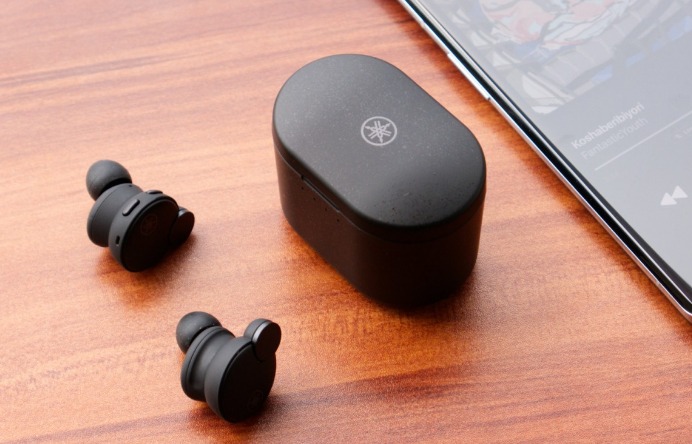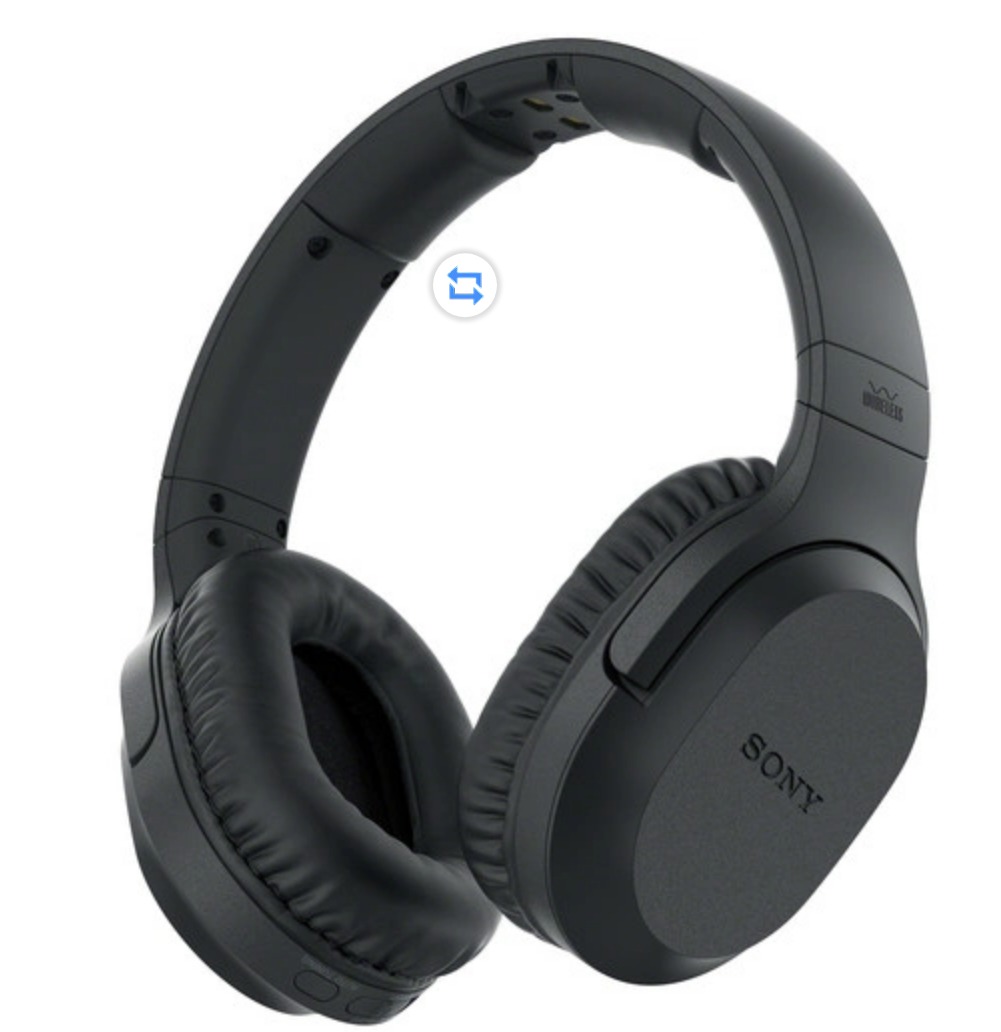YAMAHA RX-A8A AV Receiver: Immersive Home Theater Sound with Surround:AI
Update on Feb. 28, 2025, 8:41 a.m.
Have you ever been to a movie theater and felt completely enveloped by the sound? The rumble of a spaceship, the whisper of the wind, the soaring score – it all comes together to create an experience that transcends simply watching a film. That’s the power of immersive audio, and it’s no longer confined to the cinema. With the right equipment, you can recreate that magic in your own home. Today, we’re going to explore one of the key components of a high-end home theater system: the Yamaha RX-A8A AVENTAGE 11.2-Channel AV Receiver. But this isn’t just a product overview; we’re going on a journey into the science of sound.

From Mono to Many: The Evolution of Surround Sound
To truly appreciate the sophistication of modern AV receivers, it’s helpful to understand where we started. In the early days of cinema, sound was monophonic – a single channel of audio emanating from a single speaker. Imagine all the sounds of a bustling city street, a dramatic chase scene, or a quiet conversation, all crammed into one audio track. It got the job done, but it lacked the realism and depth we crave today.
Then came stereo, with two channels (left and right), creating a sense of width and directionality. Suddenly, sounds could move across the soundstage, adding a new layer of immersion. But the real breakthrough came with surround sound. By adding more speakers – typically 5.1 (five speakers and one subwoofer) or 7.1 (seven speakers and one subwoofer) – sound engineers could place sounds around the listener. A car could whiz by behind you, rain could patter on the roof above, and you’d feel like you were right in the middle of the action.
Beyond Channels: The Object-Based Audio Revolution
Traditional surround sound, while a significant improvement over stereo, still had limitations. It was “channel-based,” meaning that sounds were assigned to specific speakers. This worked well, but it wasn’t perfectly flexible. Enter object-based audio, the technology behind Dolby Atmos, DTS:X, and AURO-3D (which the RX-A8A supports via a future firmware update).
Imagine a helicopter flying overhead in a movie. In a channel-based system, the sound engineer would have to blend the helicopter’s sound across multiple speakers (front, surround, height) to create the illusion of movement. With object-based audio, the helicopter is treated as a single object with associated metadata that describes its position, size, and movement in three-dimensional space. The AV receiver then uses this metadata to render the sound in real-time, placing it accurately in the sound field based on your specific speaker configuration. This results in a much more precise and realistic soundscape. Think of it like the difference between drawing a picture with crayons (channel-based) and sculpting a 3D model (object-based).

Decoding Reality: Inside Yamaha’s Surround:AI
Now, let’s get to one of the most exciting features of the Yamaha RX-A8A: Surround:AI. This isn’t just a fancy marketing term; it’s a sophisticated application of artificial intelligence to enhance the surround sound experience.
Imagine you’re watching a complex action scene. Explosions are booming, bullets are whizzing by, characters are shouting, and the score is swelling. It can be a lot for a traditional surround sound system to handle, and sometimes the details can get lost in the mix. Surround:AI acts like a virtual sound engineer, constantly analyzing the audio content and making real-time adjustments to optimize the surround sound parameters.
How does it do this? It uses a combination of techniques, but at its core is a powerful digital signal processor (DSP) and a deep learning algorithm. This algorithm has been trained on a massive database of movie scenes, learning to recognize different types of audio events (dialogue, music, sound effects) and their optimal placement within the sound field.
When you’re watching a movie, Surround:AI is constantly analyzing the incoming audio, identifying these different elements, and adjusting parameters like:
- Dialogue Clarity: Enhancing the intelligibility of voices, even amidst loud background noise.
- Sound Effect Directionality: Making sounds like gunshots or footsteps more precise and impactful.
- Sound Field Expansion: Creating a wider and more enveloping soundstage.
- Dynamic Range Optimization: Ensuring that both quiet whispers and thunderous explosions are reproduced accurately.
It’s important to note that Surround:AI doesn’t create artificial sounds; it takes the existing audio information and optimizes it for your specific speaker setup and room acoustics. It’s like having a skilled audio engineer constantly fine-tuning the sound mix to match the on-screen action.

Your Room, Your Sound: The Magic of YPAO-R.S.C.
No two rooms sound the same. The size, shape, furniture, and even the materials used in your walls and floors can significantly impact how sound waves travel and interact. This is where Yamaha’s YPAO-R.S.C. (Reflected Sound Control) technology comes into play.
YPAO is an automatic room correction system that uses a supplied microphone to analyze the acoustic characteristics of your listening environment. Think of it as a sonic “fingerprint” of your room. But it’s not just a simple measurement; the RX-A8A’s YPAO system is incredibly sophisticated, performing multiple measurements from different listening positions and taking into account factors like:
- Speaker Distance and Level: Ensuring that the sound from each speaker arrives at your ears at the correct time and volume.
- Frequency Response: Identifying peaks and dips in the frequency response caused by room reflections and resonances.
- Early Reflections: Analyzing the first reflections of sound off your walls, ceiling, and floor.
- Reverberation Time: Measuring how long it takes for sound to decay in your room.
- Angle and Height: Using a specially designed microphone stand, YPAO measures not only the horizontal position of the sound, but, the vertical, too.
Based on these measurements, YPAO applies precise equalization and other adjustments to each speaker channel, compensating for the negative effects of your room’s acoustics. The result? A cleaner, more balanced, and more accurate soundstage. It’s like having a professional acoustician tune your home theater specifically for your room.
The Building Blocks of Brilliance: High-Fidelity Components
All the sophisticated processing in the world wouldn’t matter if the underlying hardware wasn’t up to par. The RX-A8A is built with high-quality components designed to deliver exceptional audio performance.
One of the key components is the digital-to-analog converter (DAC). This is the chip that converts the digital audio signals from your Blu-ray player, streaming device, or game console into the analog signals that your speakers can reproduce. The RX-A8A uses ESS SABRE ES9026PRO Ultra DACs – highly regarded chips known for their exceptional clarity, detail, and low noise floor. A good DAC is like a high-quality lens in a camera; it ensures that the final image (or in this case, sound) is as sharp and accurate as possible.
The amplifier section is equally important. The RX-A8A delivers 150 watts per channel, providing ample power to drive even demanding speakers to high volume levels without distortion. It also features a high slew rate, which means it can respond quickly to rapid changes in the audio signal, resulting in a more dynamic and impactful sound.
Wired for Sound (and Everything Else): Connectivity and Control
The RX-A8A is a hub for all your home entertainment needs. It boasts seven HDMI inputs and three outputs, all supporting the latest HDMI 2.1 standard. This means it can handle 8K video at 60 frames per second and 4K video at 120 frames per second, ensuring compatibility with the latest gaming consoles and high-resolution displays. It also supports eARC (Enhanced Audio Return Channel), which allows you to send high-quality audio from your TV to the receiver over a single HDMI cable.
Beyond HDMI, the RX-A8A offers a wealth of connectivity options, including digital optical and coaxial inputs, analog RCA inputs, and even a phono input for connecting a turntable. It also features built-in Wi-Fi, Bluetooth, and AirPlay 2, allowing you to stream music wirelessly from your smartphone, tablet, or computer. And with support for popular streaming services like Spotify, Pandora, TIDAL, and Amazon Music HD, you’ll have access to a virtually limitless library of music.
Yamaha’s MusicCast technology takes things even further, allowing you to create a whole-house audio system. You can connect the RX-A8A to other MusicCast-compatible speakers and devices throughout your home, and control them all from a single app. Imagine listening to the same music in every room, or different music in different rooms – it’s all possible with MusicCast.
And for those who prefer voice control, the RX-A8A works with Amazon Alexa, Google Assistant, and Siri (via AirPlay 2). You can simply ask your voice assistant to play music, adjust the volume, or even switch inputs.
Experience Immersive: Beyond the specifications.
While it is useful to consider specifications, ultimately what truly matters is the listening experience. Imagine sitting on your couch, enveloped in the breathtaking soundscape of your favorite film. The dialogue is crystal clear, the sound effects are visceral and precisely placed, and the music swells with emotion. You’re not just watching a movie; you’re living it. That’s the promise of immersive audio, and that’s what the Yamaha RX-A8A delivers.
Small issues and Addressing Concerns
While the RX-A8A is a top-tier receiver, it’s not without its drawbacks. The most obvious is the price; it’s a significant investment. However, for those who demand the best possible home theater experience, the cost can be justified by the performance and features.
Another potential concern is the complexity of setting up an 11.2-channel system. It can be daunting for beginners. However, Yamaha’s YPAO system and on-screen setup guide make the process much easier than it might seem. Also, one user has also reported the speaker connectors being of lower quality, which is something to keep in mind.

The Conductor of Your Home Cinema: The Yamaha RX-A8A
The Yamaha RX-A8A AVENTAGE is more than just an AV receiver; it’s the heart of a truly immersive home theater system. It’s a sophisticated blend of cutting-edge technology, high-quality components, and user-friendly design, all working together to deliver an unparalleled audio experience. It’s a testament to the power of science and engineering to enhance our enjoyment of art and entertainment. It’s an invitation to step into the world of sound, and experience movies, music, and games like never before.



























































